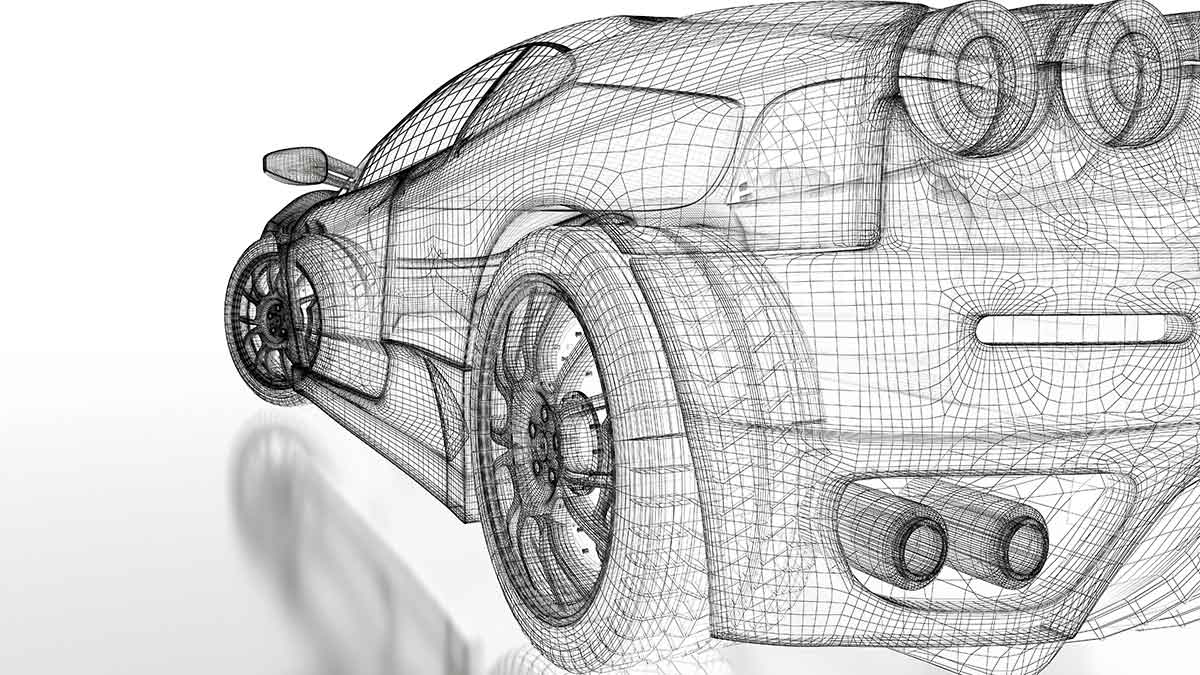The topic of technological transformation has become hyper-relevant, and more so in disciplines that are inherently future-forward, such as design. If you’re a design professional with managerial responsibilities, you’ll want to know how Industry 4.0 will impact the design workflow and how to make the most of it.

© Murrstock / stock.adobe.com
What is Industry 4.0?
The term Industry 4.0 refers to a process of digital transformation, which is sometimes called the fourth revolution. This process entails a qualitative change in how value is produced. Within this approach, the main pillars driving process optimization and value creation are connectivity and digitalization.
Industry 4.0 is a gradual process that continues to move towards a digitally enabled economy where systems and objects are interconnected, whether they are physical or digital. To achieve this, Industry 4.0 relies on key technologies like Big Data, Internet of Things, cyber physical systems, to mention just a few.
The impact of this transformation is all-encompassing. Harnessing advanced tech tools can improve productivity, reduce costs and human errors, lead to higher profitability, and improve the overall quality and sustainability of products and processes.
Six principles of Industry 4.0 design
Industry 4.0 is underpinned by six key principles that design firms should embrace in order to realize the full benefits of the digital transformation.
1. Interoperability
In Industry 4.0, systems, objects, and assets are interconnected and can operate smoothly between between and within each other.
2. Virtualization
Technologies like 3D, virtual reality and augmented reality help replicate the physical world in a digital environment to a high degree of accuracy. At the same time, virtualization helps make design a 100% context-aware process.
3. Decentralization
Industry 4.0 design favors direct models of value creation, planning and decision making. This reduces inefficiencies and bottlenecks in the design process and gives design teams more autonomy.
4. Real-time capability
Within this paradigm, the value chain is imbued with real-time functions in order to match the fast-paced character of the 21st-century economy. Real-time capabilities help design firms adopt a more flexible approach through the collection of valuable data and contribute to better business continuity.
5. Personalized service focus
Personalization is one of the driving forces of Industry 4.0 design. In the corporate design world, this translates into having tools to facilitate the inclusion of end-user preferences early in the product development process. Taking into account the human factors that intervene in industrial processes can help design firms satisfy new needs in new contexts.
6. Modular approach
Industry 4.0 design is all about flexibility and about moving away from rigid systems to agile processes. Having the right tech tools can support design companies adopt a responsive modular within perfectly integrated ecosystems.
Designing in the Industry 4.0 value chain
Industry 4.0 has vast potential for the design and manufacturing industries. In fact, the concept evolved from an initiative that aimed to increase the competitiveness of the German manufacturing industry. Today, Industry 4.0 is implemented throughout the entire value chain in sectors where design and manufacturing go hand in hand, as is the case of automotive.
For example, augmented reality and artificial intelligence are routinely used by Porsche and BMW, and other automotive firms are exploring the full scope of the digital transformation. Although the focus is mainly on the production chain and on the application of smart manufacturing, there’s enormous value in applying the principles of Industry 4.0 to the entire design process.
A key aspect is the adoption of next-generation technology, like virtual reality. This can thoroughly transform the design workflow and bring it in line with the efficiency gains that characterize the fourth revolution.
Virtual reality solutions are built around the principles of modern design
In VR, teams can skip redundant workflow stages, such as 3D rendering. This frees up time to focus on developing a personalized service focus that meets end-user expectations faster and more accurately.
Virtualization appeals to design managers because of its inherent efficiency gains. Process optimization is at the heart of Industry 4.0 tools like flyingshapes. In some sectors (like automotive) the cumulative gains of using this revolutionary tool can shorten the design workflow by 80% and contributes to a faster time to market.
And lastly, designing with an Industry 4.0 tool allows teams to handle increasing levels of complexity by leveraging quality data for better analysis and insight. flyingshapes’ focus on high-fidelity modeling facilitates the optimal use of resources throughout the entire workflow.
Of course, data-rich workflows require stronger security protocols. Cyber security has already been identified as a priority for automotive giants like GM, and intellectual property breaches have become a real issue in corporate design since the mass adoption of remote work. This isn’t a concern when working with flyingshapes, since the platform has a strong safety record, and no data is stored on physical devices.
Conclusion
Implementing the principles of Industry 4.0 design can reshape workflows and processes so they’re more agile, responsive, and efficient. Next-generation design tools like flyingshapes embody the principles of the fourth revolution and can help design managers improve their team’s readiness and productivity. If you would like to find your place in the competitive landscape of Industry 4.0 design, request your free trial.


